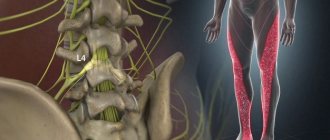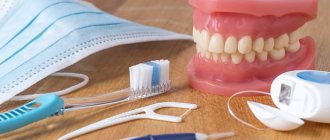It happens that unpleasant inflammations appear on the tongue, causing discomfort and pain. This happens often; almost every person has encountered this phenomenon at least once in their life.
Typically, the papillae on the tongue become inflamed due to external factors, and are characterized by their transience. But it happens that such a reaction of the tongue mucosa is provoked by internal factors, and is a symptom of a serious disease.
This article will tell you how to figure out what problem the patient is dealing with and help the tongue papillae return to normal as quickly as possible.
Causes of inflammation of the papillae on the tongue
Conventionally, the reasons that caused inflammation of the papillae of the tongue can be divided into 2 groups:
- The mucous membrane of the tongue can be damaged by gastric juice
mechanical (obtained as a result of mechanical action on the tissues of the tongue);
- internal (when inflammation of the receptors occurred as a result of diseases caused by pathogenic microorganisms and their metabolic products).
Mechanical reasons include:
- burns from chemical compounds (acids, alkalis, alcohols);
- burns from thermal effects (excessively hot food or drinks);
- the mucous membrane is damaged by gastric juice (most often this occurs during vomiting or reflux esophagitis, when gastric juice with food particles is thrown into the esophagus; gastric juice has a very acidic environment, which causes a chemical burn);
- mechanical damage from direct contact with an irritating object (for example, when sucking candy or from constantly eating food with a rough surface);
- household injuries, including damage to tongue tissue from hygiene items or accidental biting;
- when brushing your teeth aggressively: the bristles of the toothbrush injure the mucous membrane of the tongue;
- regular injuries resulting from sharp chipped teeth, unsuccessfully placed dentures or fillings;
- too spicy or salty food;
- stress and depression as factors that weaken the body's immune system.
Other reasons include:
- Language structure
diseases localized in the oral cavity (and caused by fungi, various bacteria and some types of viruses, including the herpes virus);
- allergies;
- uncontrolled or very long-term use of antibiotics;
- such systemic diseases as: scarlet fever, measles, diphtheria, anemia, disruptions in the gastrointestinal tract;
- avitaminosis;
- decreased immunity.
Important! It is necessary to distinguish between such types of inflammation of the papillae as papillitis and glossitis. Papillitis occurs as a consequence of mechanical damage, and glossitis - as a consequence of pathogenic processes.
What about your taste buds?
On the surface of the tongue there are thousands of small pimples - these are papillae. All of them can be divided into 6 groups, each of which plays its own role, including the ability to distinguish four basic tastes: sweet, salty, bitter and sour.
Interestingly, over time, taste buds “wear out,” but if a person is healthy, they are replaced by new “pimples.” At a young age, this process occurs quite quickly, and after 45 years, as a rule, it slows down.
Best materials of the month
- Coronaviruses: SARS-CoV-2 (COVID-19)
- Antibiotics for the prevention and treatment of COVID-19: how effective are they?
- The most common "office" diseases
- Does vodka kill coronavirus?
- How to stay alive on our roads?
Therefore, with age, a person ceases to distinguish tastes and aromas so keenly. But sometimes the inability to taste food is not just due to age. Loss of sensitivity in taste buds may be a symptom of a bacterial infection in the digestive tract or indicate problems with the pancreas.
Symptoms
The patient may experience discomfort in communication due to impaired diction and thickening of the upper layer of the epithelium of the tongue
The main symptoms of inflammation of the papillae on the tongue are their redness (hyperemia) and soreness (or itching).
There are also disruptions in the perception of the taste qualities of food and drinks and their temperature conditions.
As a result of inflammation, the patient may experience discomfort in communication due to impaired diction and thickening of the upper layer of the epithelium of the tongue.
You can distinguish papillitis from glossitis by looking at the back of the tongue: if there is no plaque on it, this means the inflammation is non-infectious.
Also, the symptoms of papillitis tend to disappear within a few days without medical assistance, since a feature of the mucous membrane of the tongue is its rapid recovery.
Sometimes an infection is associated with papillitis, but this is considered a complication and goes into the category of glossitis.
External manifestations
If you look closely at the painful area, the inflamed papillae can be easily identified. They increase in size and change color, becoming soft pink, deep red or completely white (with candidiasis).
Thread-like stretched along the edges of the tongue. Their number is greatest, their function is to touch and hold food in the mouth, they do not perceive taste
Glossitis
Folded glossitis
A folded tongue may be a normal variant or a manifestation of mutations in the genetic apparatus.
There is a high probability of this anomaly occurring in congenital pathologies of the central nervous system (Down's disease). A distinctive feature of the folded tongue are longitudinal and transverse folds. In this case, the longitudinal fold runs strictly along the midline of the tongue - from its tip to the root. Often a folded tongue is combined with macroglossitis (enlarged tongue) and areas of scaly peeling of the tongue.
Patients usually do not complain, but pay attention to the unusual appearance of the tongue. If atrophy of the tongue papillae is present, complaints of burning and loss of taste are possible. Bad breath often occurs due to food getting into the folds.
A folded tongue may be part of a set of symptoms when:
- acute gastritis;
- hypovitaminosis B;
- diabetes mellitus in combination with candidiasis;
- osteochondrosis of the cervical spine.
Atrophic glossitis
An inflammatory process of the mucous membrane of the tongue, which is accompanied by a decrease in the size of its papillae or their disappearance. As a result, the surface of the back of the tongue becomes red, smooth and shiny. Atrophic processes affect all tissues of the tongue, as a result of which its thickness decreases.
As the muscle volume of the tongue decreases, swelling and ulceration appear. The patient complains of a change in taste perception. soreness and bad breath.
Atrophic glossitis develops when:
- blood anemia (iron deficiency, B12 deficiency);
- hypovitaminosis (riboflavin - vitamin A, nicotinic acid - vitamin PP);
- streptococcal and fungal infections;
- HIV infections.
Hypoplastic glossitis
Damage to the mucous membrane of the tongue, which develops due to diseases of the gastrointestinal tract and lack of vitamins B2 (riboflavin) and PP (nicotinic acid). It is characterized by a decrease or disappearance of the papillae of the tongue, so the tongue has a “varnished” appearance, with bright spots and stripes.
If the absorption of vitamins B2 and PP in the intestine is impaired, unpleasant sensations occur: burning, tingling and pain in the tongue when eating.
Exfoliative glossitis
An inflammatory-dystrophic disease of the mucous membrane of the tongue, the etiology (cause) of which has not yet been definitively established. First described as "geographic tongue" and "benign migratory glossitis". Occurs in diseases of the gastrointestinal tract, helminthic infestations, a tendency to allergies and menopause. It is believed that hereditary factors and infectious diseases play a role in the development of the disease.
Exfoliative glossitis is characterized by the periodic appearance and disappearance of round or irregularly shaped red areas of epithelial exfoliation on the back of the tongue and lateral surfaces, surrounded by a bright rim. The exposed areas quickly restore their structure and appear elsewhere on the tongue.
These peelings do not bother the patient, but if the desquamation intensifies, a burning, tingling, tingling sensation appears, especially while eating. The tongue reacts to spicy and spicy foods, hot foods, and is easily infected due to the large area of exposed mucous membrane, which is devoid of protective properties.
Ulcerative glossitis
This pathology of the tongue occurs with infectious lesions of the mucous membrane, as well as common severe somatic diseases. It is characterized by the formation of ulcerative and erosive-ulcerative elements on various surfaces of the tongue, which occur with a pronounced pain symptom, significant dysfunction of the tongue (swallowing, chewing, speech), regional enlargement of the lymph nodes and symptoms of general intoxication of the body (malaise, headache, fever ).
In clinical practice, ulcerative glossitis occurs in the following conditions.
- Diseases of the cardiovascular system.
Decompensated course of hypertension, decompensated heart valve defects, large-focal myocardial infarction. Ulcers appear on the bluish surface of the tip and the anterior third of the tongue, along the midline.
- Chronic gastrointestinal diseases.
In this case, against the background of an ash-gray coating, painful ulcers form on the root of the tongue.
- Blood diseases.
Acute leukemia, aplastic anemia. Ulcerative-necrotic formations are located over the entire surface of the tongue.
- Behçet's disease.
Systemic disease of the mucous membranes of the body of unknown etiology. Multiple, painful aphthae and ulcers appear on the tongue.
- Incorrect prosthetics.
Bright red erosions and ulcers are located on the lateral surfaces of the tongue.
Villous glossitis
A chronic disease of the mucous membrane of the tongue, which is characterized by the proliferation of filiform papillae with their subsequent keratinization. This is predisposed to:
- diseases of the gastrointestinal tract (gastritis with increased and decreased acidity of gastric juice, diseases of the small and large intestines);
- infectious diseases (pulmonary tuberculosis);
- long-term antibacterial therapy;
- hereditary predisposition;
- Addison's disease;
- smoking, drinking alcohol;
- hemolytic anemia.
In this case, on the tongue in the midline, a triangular or oval-shaped lesion is visible (longitudinal size - 2-3 cm), covered with thickened filiform papillae, dark gray, brown, sometimes green.
Villous glossitis is accompanied by a sensation of a foreign body in the mouth, a gag reflex (intensifies when talking), impaired taste sensitivity and dry mouth.
Catarrhal glossitis
Acute damage to the superficial layers of the mucous membrane of the tongue. It is characterized by hyperemia (redness), swelling and pain (burning, discomfort when eating and talking).
Allergic glossitis
It is an inflammatory response of the tongue mucosa to the local action of allergens (often medicinal in nature). It develops acutely, with pronounced swelling of the tongue mucosa and severe pain. Hypersalivation (profuse salivation), fever, and enlarged regional lymph nodes are possible.
If there are dentures in the mouth, allergic glossitis occurs against the background of increased sensitivity to the materials from which the structure is made. On the lateral surfaces of the tongue that are in contact with the prosthesis, areas of redness of the mucous membrane appear.
Herpetic glossitis
Develops on the mucous membrane of the tongue when attacked by the herpes virus. It is accompanied by pronounced intoxication of the body (fever, malaise, muscle and headaches), regional enlargement of the lymph nodes (submandibular and parotid), severe soreness of the tongue, and disruption of its functions.
With herpetic glossitis, the tongue is covered with a dense coating that is difficult to remove; transparent, painful blisters filled with liquid are visible on the back of the tongue and its inner surface.
Interstitial glossitis
Sclerosing glossitis is one of the most severe forms of inflammation of the tongue, is a precancerous condition and requires immediate treatment. In this case, the pathological process occurs in two stages
At the initial stage, inflammation develops in all tissues of the tongue, as a result of which it increases in size.
Then, scar tissue forms at the site of inflammation, which leads to a decrease in the size of the tongue and its thickening. At the same time, the mucous membrane loses its papillae, becomes lumpy, and cracks and ulcers often form on it, which can become malignant.
Interstitial glossitis develops with syphilis and is chronic. In the absence of timely specific treatment, the muscle tissue of the tongue is completely replaced by connective tissue and a complete loss of tongue function develops.
Localization
An important role in making a diagnosis and finding out the cause of the disease is its localization. The localizations of inflammation of the papillae, as well as the possible causes of their appearance, will be listed below.
In all languages
Inflammation of the papillae throughout the tongue may indicate a chemical or thermal burn, as well as the infectious nature of the disease.
Inflammation of the papillae throughout the tongue may indicate a chemical or thermal burn
On the root
If the problem area is the back of the tongue (root), then the patient will experience difficulty perceiving the bitter taste, since the inflammation will affect the grooved papillae responsible for this.
A popular cause of this localization of inflammation is an allergic reaction, with the patient noting increased salivation and swelling of the tissues, including the soft palate that may react with swelling.
The cause may be diseases associated with the gastrointestinal tract, or malfunctions in its functioning (for example, too low or high acidity). Also, it is on the root that fungal and bacterial glossitis is localized.
The cause may be diseases associated with the gastrointestinal tract or malfunctions in its functioning.
On the tip
The tip of the tongue most often suffers from mechanical damage, since the tip comes into contact with too hot food and drinks, rubs against chipped teeth, and is subjected to biting.
The tip of the tongue most often suffers from mechanical damage, since the tip comes into contact with food and drinks that are too hot
Side
On the sides of the tongue there are the so-called conical, mushroom-, filament- and leaf-like structures of the tongue.
Enlargement and hyperemia of the taste buds, which are located on the sides of the tongue, most often appear due to mechanical damage to the teeth, but pathogenic microorganisms and chemical burns can also be the cause.
Inflammation on the sides of the tongue can also be caused by pathogenic microorganisms and chemical burns.
Plaque and possible diseases
During normal functioning of the body, the human tongue is covered with a thin, loose layer of whitish plaque. If it changes color or thickness, this is already an alarming signal.
White
A dense white coating can appear as a result of hypothermia or a slowdown in metabolism (this often happens in the fall). If the plaque is uniform, but very thick, this indicates the presence of a bacterial infection in the body, and if it forms lumps, this is a signal of a fungal disease.
A thick layer of white plaque also occurs with chronic gastritis with high acidity or enterocolitis. With gastritis with low acidity, the plaque is not as thick and drier. It is also interesting that by the thick white coating on the tongue you can recognize those with a sweet tooth and lovers of dairy products.
Grey
Gray plaque is a sign of infectious diseases accompanied by fever. Also, a grayish coating may indicate diseases of the gastrointestinal tract or liver. In particular, the tongue may acquire a grayish tint during an exacerbation of peptic ulcer disease. If a gray coating appears in the company of small blisters on the tongue, the person may be suffering from herpes. A grayish coating can also signal that the body lacks iron.
Brown
Most often, a tongue with a dense brown coating can be seen in smokers. The same symptom indicates disturbances in the respiratory system, which can lead to hypoxia. Also, brown plaque is a signal of digestive problems.
Yellow
If such a plaque appears in a person in the summer, this may indicate overheating of the body. The surface of the tongue also turns yellow after drinking coffee or certain spices. In more serious cases, the appearance of yellow plaque indicates a gastric ulcer, malfunction of the pancreas or liver.
Greenish
Plaque with a green tint is a very alarming signal. As a rule, it warns of serious liver diseases, including the development of cancer.
Diagnostics
If the patient has inflamed papillae on the tongue and the symptoms do not go away within a day or two, if the symptoms worsen, if they are pronounced, and the points of inflammation themselves are very painful, then you need to consult a dentist.
The dentist will conduct an examination on the following points:
- If the presumptive diagnosis is associated with diseases of the internal organs, then additional consultation with other specialists will be required.
assess the color, shape and size of problem areas;
- determine whether there is swelling;
- check the tongue for mechanical tissue damage;
- examine the surface of the tongue for plaque; if it is detected, it will evaluate its location, color and quantity;
- check the tongue for the presence of ulcers or eczema;
- Assess the condition of the oral cavity as a whole.
The following tests may be required to make a diagnosis:
- Smear for histology;
- Tongue sensitivity testing;
- Blood sampling for general analysis and biochemistry;
- Blood test to exclude HIV, AIDS, hepatitis virus, syphilis and other pathogenic elements.
If the presumptive diagnosis is associated with diseases of the internal organs, then additional consultation with other specialists (gastroenterologist, dermatologist, endocrinologist, immunologist, ENT) will be required.
Is plaque on the tongue dangerous - how to treat it
An ultrasound of the stomach will help clarify the diagnosis.
Plaque itself does not pose any threat to health. As soon as the underlying disease is cured, the condition of the tongue will return to normal.
As for gastritis, long-term treatment with careful adherence to the recommendations of a gastroenterologist will help relieve its symptoms.
Perhaps the doctor will conduct research aimed at clarifying the diagnosis: FGDS, ultrasound of the stomach, laboratory tests of blood and gastric juice. The following drugs will be prescribed as treatment:
- Antibiotics of 2-4 types, taken in combination:
- Pro- and prebiotics;
- Vitamins;
- Antacids;
- Proton pump blockers.
Patients with gastritis must follow a strict diet aimed at sparing the gastric mucosa and not provoking the release of excessive amounts of hydrochloric acid. With this treatment, not only the gastric mucosa, but also the condition of the tongue will definitely return to normal.
Treatment
If after a couple of days the symptoms have not disappeared or, on the contrary, have intensified, rush to the dentist
If the papillae are inflamed, but the cause is difficult to determine, then first of all, rinse your mouth with an antiseptic solution.
If after a couple of days the symptoms do not disappear or, on the contrary, intensify, rush to the dentist.
After conducting the diagnostics, he will make a diagnosis and either refer you to another doctor or describe how to treat the problem.
Typically, treatment consists of antiviral (acyclavir, Zovirax) and antihistamine (suprastin, tavegil) drugs, antibiotics (clorsacillin, clindomycin) and antifungal agents (chlorhexidine, furacelin, miramistin).
If you can’t see a doctor, you can improve your condition at home.
The following methods are effectively used for this:
- You can apply ice (or chew it) to relieve swelling.
- Regularly rinse your mouth with a baking soda solution (15 grams of baking soda per 1 glass of lukewarm water) - this will help relieve inflammation and reduce swelling.
- Lubricate the problem area with honey - this product is famous for its antibacterial properties, and it will also help relieve swelling and promote tissue regeneration.
- Drink natural yogurt - it will help restore normal oral microflora if the problem lies in its disturbances.
Treatment methods
Treatment tactics are determined taking into account the clinical picture, the degree of development of the disease and other associated factors. Several techniques can be used to eliminate inflammation of the oral cavity.
Anti-inflammatory treatment
To eliminate inflammation, the doctor prescribes antiseptics and pads to the patient. For diagnosed gingivitis, Chlorohexidine (prescribed rinse) or Cholisal (available in gel form) is used.
If the inflammation is associated with periodontitis, the patient is indicated for complex treatment with antibiotics. In the most severe cases, surgery is performed.
To treat pregnant women, the dentist selects gentle medications that are not harmful to the child’s health.
Antibiotic therapy
Antibiotics are prescribed to treat acute forms of gingivitis, as well as diseases caused by pathogenic bacteria. The drug, dosage and course duration are determined by the attending physician. As a rule, antibiotics are prescribed in combination with prebiotics and vitamin complexes.
Surgery
The principle of surgical treatment is to coagulate overgrown gums. The method is widely used in dental practice. The procedure is carried out using a special device with an electrode heated by an electric current.
The technique makes it possible to stop the inflammatory process and eliminate bleeding. After the operation, the gums acquire a normal color, the patient ceases to feel pain and discomfort.
Features of child treatment
Even with papillitis, you can catch a serious complication
If a child complains of pain in the tongue, and you notice redness of the papillae, brush the baby’s teeth, ask him to rinse his mouth thoroughly, and go to the dentist.
The child’s immune system is not yet strong enough to cope with inflammation on its own.
Even with papillitis, you can catch a serious complication, since a curious child explores most objects from the surrounding world using the oral cavity.
Discomfort in the lateral areas of the tongue
When the tongue hurts on the side of any side, the causes of the discomfort may be a discrepancy in the size of the dentures, inflammation of the mucous membranes, heavy smoking, or characteristic neuralgic manifestations.
Pain on the tip of the tongue
The tip of the tongue is constantly in contact with the teeth and is actively involved in the process of creating sounds, therefore it causes special discomfort to people. The most common reasons for this condition are:
- Minor injuries at the end of the tongue
occur most often, since it is this area that first encounters food, dentures and teeth.
- Glossalgia
accompanied by a burning sensation, as well as the possibility of pain spreading to other parts of the oral cavity.
- Glossitis
– inflammatory disease of the oral cavity.
- Stomatitis
causes small painful wounds at the end of the organ.
- Allergic manifestations
occur as a result of immediate contact with certain medications or foods.
Development of pathology
The most complex forms of progressive inflammation of the gingival papillae are gingivitis and periodontitis. The most common in dental practice is catarrhal gingivitis, which has symptoms similar to advanced inflammation and can lead to changes in the shape of the gums and deterioration of health on an ongoing basis.
Ulcerative gingivitis is a pathology that provokes the death of gum tissue and inflammatory processes in the lymph nodes. One of the reasons for its occurrence is hypothermia of the oral cavity, in combination with bacteria leading to the formation of gray plaque on tissue areas. Treatment of the disease must begin in the early stages, otherwise it can develop into severe purulent inflammation.
Hypertrophic gingivitis is characterized by accelerated growth rates of cellular tissues of the basal and connective group. The cause is a disruption of hormonal levels and normal metabolism in the body. In the absence of therapy, thickened tissues begin to keratinize and thicken, causing pain and discomfort.
Periodontitis is the formation of a temporary cyst in the upper area of a tooth susceptible to pathology. Purulent accumulations form in the cavity, causing swelling and pain. The process can be caused not only by bacteria, but also by pulpitis, as well as by an incorrectly performed dental prosthetic procedure.











